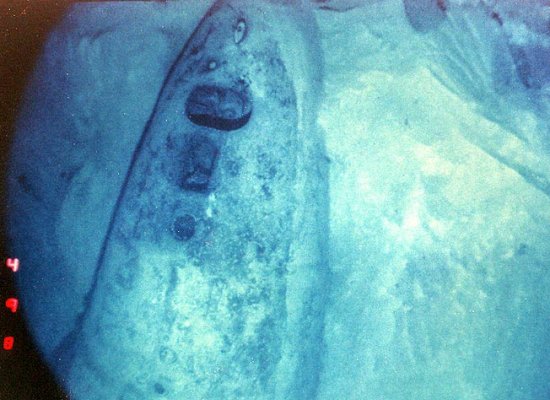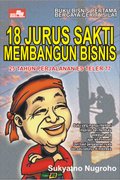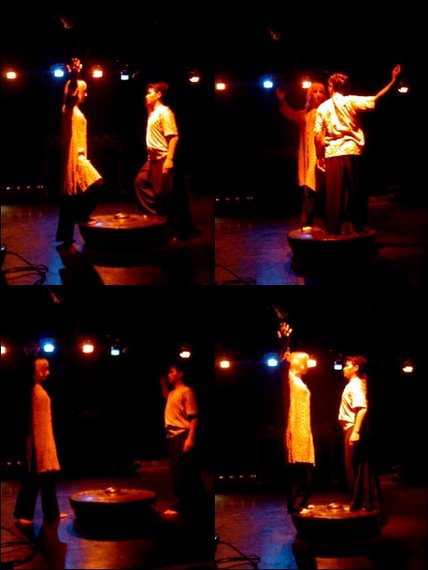You ask - Atlantis? What is hidden behind this mysterious word? Did this lost, mythical world really exist? Why has it been covered with so much words, veils of fantasy, half-truths, assumptions, hypotheses, or perhaps truths? Or is it just a pure fabrication that inspires poets, occultists, and a little less conventional scientists? It's hard to tell...
Atlantis received a lot of attention and many words were written about it; delusions and disinformation too. However, not only laymen but also few and quite earnest scientists claim that this fabulous world did really exist here some long time ago.
Atlantis and its unearthly destruction gave birth to several theories; however, before we start speaking about them, let us look at the historically first recorded note about the existence of this unknown world.
The first record about Atlantis was written by Plato - a famous and trustworthy Greek philosopher - who in his works, Critian (and Timeus, too) described in words of Critias a story about Solon, a famous thinker and poet from 6th century BC, who had heard in Egypt from a certain priest that some long time ago there had existed a land called Atlantis, which had been destroyed. A fragment of Plato's words: On this island of Atlantis had arisen a powerful and remarkable dynasty of kings, who ruled the whole island, and many other islands as well and parts of the continent; in addition it controlled, within the strait, Libya up to the borders of Egypt and Europe as far as Tyrrhenia (Italy)...
Translation by Sir Desmond Lee, first published 1965, Penguin Classics.
According to other narrations, Gods divided the world for themselves. Poseidon was one of them and he got the Atlantis. Some people had already lived on the island and one of them was Evenor who had Leucippe as his spouse; they had one daughter - Cleito. Cleito grew up, she was more and more beautiful, and Poseidon fell in love with her. When Cleito's parents died, the almighty God of the Sea took care of her and she was about to give birth to five pairs of twins - men, twin brothers, who received the Atlantis to domineer over it. The oldest one was Atlas. And these ruled and governed in a big empire...
Egyptians said to Solon that Atlantis had been destroyed some 9000 years ago. Thus, if we add 600 years (before Christ) when Solon lived, and 2000 years that passed from the Christ's birth until today, we will get 11,600 years.
There are other authors who wrote about Atlantis, but the first and most famous source is that one of Plato. The other source is a Greek philosopher Diodorusa Siculus, who lived some 90-20 years before Christ, and who wrote (Bibliotheca Historica) that some thousands years in the past Phoenicians had visited a very big island. Atlanteans allegedly "civilized most of the people". So you can see, there are more historical descriptions of Atlantis among which we can also find the one from Aristotle, who wrote, too, about a big island in the Atlantic Ocean. Furthermore, the destruction of Atlantis was mentioned by historians such as Marcellinus, Timagenus, Theopompos...
We also deal with written records of the Aztecs, Mayas, and not only with these. There are written records such as Chilam Balam, Dresden Codex, Popol Vuh, Codex Cortesianus - they all indicate that the existence of such an advanced civilization was possible. If we look into the line drawing of the less distant history, Atlantis had always attracted poets, writers, but also occultists or travelers/adventurers. One such author was Francis Bacon, who already in 1626 wrote a very interesting work - New Atlantis, which - at its time - exceeded even Verne. Bacon describes here how a shipwreck crew found some extremely advanced people on an island in the Atlantic Ocean. The inhabitants of this island could "record sounds", they were able to "demonstrate" and "copy" it; they used "engines" for all types of movements; they also had messengers whom they sent to visit the worldly nations and collect information.
Occultism and New Age also drew information from the famous Russian clairvoyant - Blavatska, who maintained that people from Atlantis were just a different race on Earth and they had amazing psychical abilities. However, being corrupted, they changed themselves to bad magicians and started war that resulted in a complete destruction.
Theories about Atlantis
Theories about Atlantis basically stand on two pillars:
I.
It is a fable.
It is a "bubble" fabricated from the fall of the Minon civilization and the destruction of the Thera Island, today known as Santorini, 1640 years before Christ by volcanic explosion in the area of smaller volcanic islands in the Egey Sea some 75 kilometers southeast from the main Greek land.
If we forget the first two points and suppose that Atlantis did really exist, then we can look at other theories:
II.
Atlantis existed in the Atlantic Ocean.
In the web of sciences, pseudoscience and charlatanism, other teachings appear such as a theory about the existence of an archipelago between Cyprus and Syria, but the above theories are the mainstream ones. Let us therefore look at some information about the possible existence of Atlantis in divergencies of opinions and in a theoretical level without requirement to prove or disprove something.
If we count on the theory about the Mediterranean Sea and the Minon civilization, we will get a simple conclusion. However, if we are not ready to stop at this point, we can also mention theories about an island or even a land in the Atlantic Ocean.
Theories about Atlantis in the Atlantic Ocean
One of the first modern-time Atlantis researchers, who delved into the study of old documents and sources about Atlantis on a long-term basis, was Ignatius Donnelly - an American congressman from Minnesota, who in the year 1882 wrote a book Atlantis the Antediluvian World, and in 1883 Ragnarok the Age of Fire and Gravel. Donnelly brought the legend about Atlantis to awareness of Americans with great success. He cites Plato in his books; he speaks about myths and theories of the Biblical flood; he does not bypass native American Indians either and tries to document language similarities of Indian languages with some European languages.
The number of authors enlarged including the ones from professional areas. For example, James Churchward wrote several books where he documents old scripts; William Niven, a geologist, tries to prove that he found similar stone tablets in Mexico. These and other writers support the theory that Atlantis existed in the Atlantic Ocean as an advanced civilization that colonized the continent of North and South America, but also Europe, Africa and Asia.
The anthropologist George Hunt Williamson made his own research of Atlantis and Lemuria. The author writes how the ancestors of the Incas led him to an old manuscript in the Andes; it records the destruction of Atlantis and Mu. They had allegedly an advanced technology.
Proofs or arguments
In case of "proofs", we should be careful, as the Atlantis topic is a good way for making money. But in addition to fake proofs, there are some trustworthy arguments too. Let's think.
The Piri Reis map come from about the year 1513.
Columbus, the man who discovered America as the first person mentioned in historical documents, studied older maps including the map of Admiral Piri Reis, which dates back to 1513. Albeit the continent of America was discovered in 1492, these maps picture the world in a shape that is against the knowledge of the present historical science. The Piri Reis map pictures also Antarctis some 300 years before it was discovered - the contours are quite accurate.
Not only this does make us "dumb". Professor Hapgood contacted the US Air Force to confirm the theory about the fact that the land areas of the Piri Reis map picturing Antarctis are not below ice. He received a positive answer.
I would like to believe... But most opinions pertaining to this subject are a product of manipulation that helps their authors maintain a "good job" or institute themselves in some hierarchy of the world. The Italian scientist Diego Cuoghi documents some details - already at the time of the Turkish Admiral, South America was being discovered by more adventurers; one of them was Amerigo Vespucci (in 1499); however, there are also maps dated before 1513 and even more accurate than the Piri Reis map if we focus on Cuba, Jamaica and Porto Rico - these areas are pictured quite inaccurately on the above-mentioned map. Writers like Dänikin or Professor Hapgood simply ignore this.
We can also mention a map by Juan de la Cosa (1500) or Cantino (1502). If we put Antarctis or "undiscovered" islands into the profile, this cannot be seen as proof, because, for example, Waldseemüller's map from 1507 pictures China prolonged from the back of India - China actually going to Sri Lanka... Thus, we could say that the missing part of Brazil on the Piri map simply did not exist!
And what about accurate contours of Antarctis? I think that Hapgood, von Dänikan and other writers arrogantly underestimate thinking and intelligence of ancient people and they forgot that Egyptians were very good sailors too.
This implies that if the Alexandrian library was destroyed as the richest source of information we had ever had - any good Egyptian pharaoh - a visionary could easily support a big expedition and it is possible that some ancient sailors knew that Antarctis existed. Having no records about this does not necessarily mean that ancient people did not explore America or Antarctis in the ancient past; neither does it mean that they had to become "extraterrestrials", as imagination of present writers often indicates, as they appear to think that ancient people were not even able to think.
Archeological findings
There are many interesting findings, but to expose details of every one of them is not necessary for the moment. To be brief, let's include only some of them to give a picture how adherents of the idea of a lost world think.
North America
In May 1969, somewhere around the Bimini islands, archeologists Mansen Valentain and Dimitri Rebikov found some remnants of a building some 30 meters deep in the sea. These were big pieces of stones - they perfectly fit into one another; the weight of one was about 25 tones. Scientists from the Miami University concluded that the remnants date back to some 7,000 or 10,000 years before Christ, which means that they are older than the pyramids of the Mayas.
The expedition of Dr. Manson Valentine found near the Bimini Islands other ruins at the sea bottom, and in the year 1982 these ruins were photographed. They are quite similar to one of the oldest places that have ever been found - Tiahuanaco Lake in Bolivia.
South America
Many explorers and adventurers tried to find the El Dorado - an imaginary place of immense richness. Some archeologists also claim that South America is the oldest cradle of humankind. Long time ago the Tiahuanaco Empire existed here and it is believed that it existed some 12,000 years before Christ. The remnants of a big city Tiahuanaco can be found even today on the banks of Titicaca Lake. Many expeditions explored this area. Scientists wonder how could the then inhabitants move heavy stones (about 130 tones) and put them side by side. The Tiahuanaco civilization gave birth to predecessors of Indians in South America.
Other sources say that Phoenicians visited South America; one such a source was Austrian Professor Ludwig Schwennhagen, who claims that he found their inscriptions in the Amazon jungle. The French researcher Apollinaire Frot traveled all over the Brazilian areas such as Minas Gerais, Goiás, Mato Grosso and Bahia and said that he had found so many such inscriptions that he could write books about them. A British explorer, Percy Fawcett, confirmed this independently.
Amazonia
Amazonia is poorly explored in terms of present knowledge; its size is only a little smaller that the present USA. A very famous is the story of Colonel Percy Harrison Fawcett, a member of the Royal Geographical Society in London.
At the beginning of the 20th century, this in archeology interested adventurer decided to explore "lost worlds" in the South-American forests. On the basis of agreements with the Bolivian and Brazilian governments, he became a member of several expeditions, and already in the year 1911 he lectured in London about "lost cities" the existence of which he predicted somewhere on the border between Bolivia and Brazil. Percy Fawcett was a real enthusiast of the mythological Atlantis and he believed that South America, i.e. Brazil, was colonized by this civilization in our ancient history.
His disappearance gave birth to several hypotheses, one of them was that Indians might capture him and that he still lives. BBC made several TV documents and they also contacted the Fawcett's family to find out more, but the family refused to disclose some sensitive materials about Fawcett with justification that people are not yet prepared to hear this...
Document 512
Fawcett, as we already know, was possessed by the idea to search ancient civilizations and he also visited many archives. He found a document in Instituto Historico e Geographico Brasileriro in Rio de Janeiro about the 1753 Portuguese expedition, where it is written: "...big, hidden and very ancient city was found without inhabitants...".
However, stories about his disappearance are exaggerated - it is not a problem to disappear in such a jungle even today without leaving any trace. Some believe that he lives in these lost cities and has eternal life...
Lemuria
The idea of Lemuria or Mu first appeared in works of Augustus Le Plongeon, the traveler and writer who conducted his own investigations.
Concepts about Lemuria are further built on the fact that identical geological structures of Permian are found in South India, South Africa, and Australia. Some geologists therefore suggested a theory of possible existence of ancient continent and proposed the name Lemuria, which somehow survived.
This lost continent was later popularized by James Churchward (1852-1936) in a series of books, beginning with The Children of Mu (1931), The Lost Continent Mu (1933), and The Sacred Symbols of Mu (1935). The books still have devotees...
Conclusion
Certainly, every reasonable man will refuse Dänikin's ideas - we may not necessarily see an "astronaut" in every ancient drawing. But neither do we have to go in a direction to hatefully reject any idea that slithered off our monocultural line. First of all, it is open thinking that is important to correctly grasp or refuse anything that appears as truth or lie.
 n trying to figure out the answer, you'll always have it at your fingertips.
n trying to figure out the answer, you'll always have it at your fingertips.






 upheavals in unexpected places. Nations that are considered prosperous and powerful, particularly western nations, will be weakened. They will be torn with civil strife and rioting as people migrate to areas that have water and can support crop-growing. The social upheaval and weakening of political structures will help the Antichrist come to power.
upheavals in unexpected places. Nations that are considered prosperous and powerful, particularly western nations, will be weakened. They will be torn with civil strife and rioting as people migrate to areas that have water and can support crop-growing. The social upheaval and weakening of political structures will help the Antichrist come to power.










